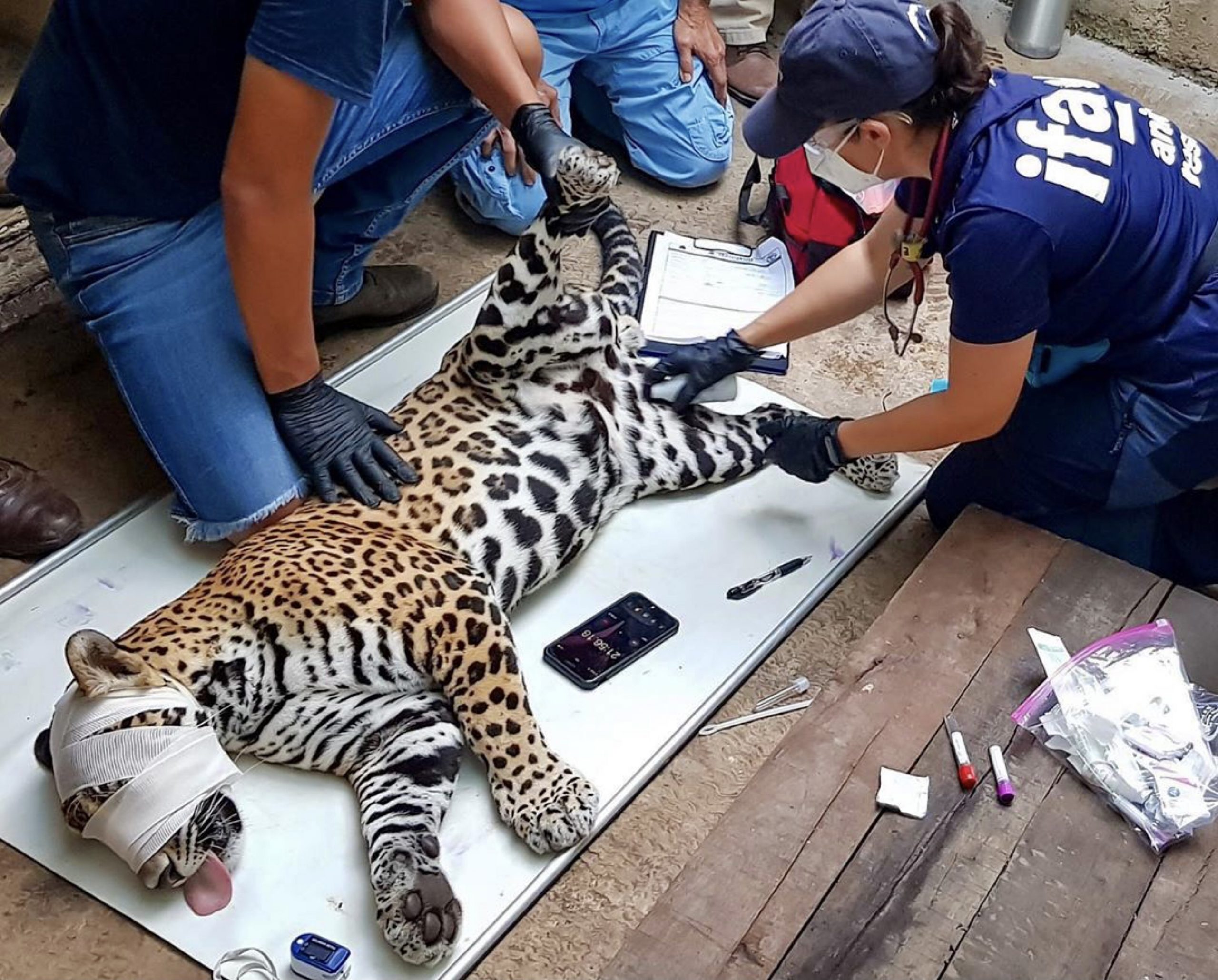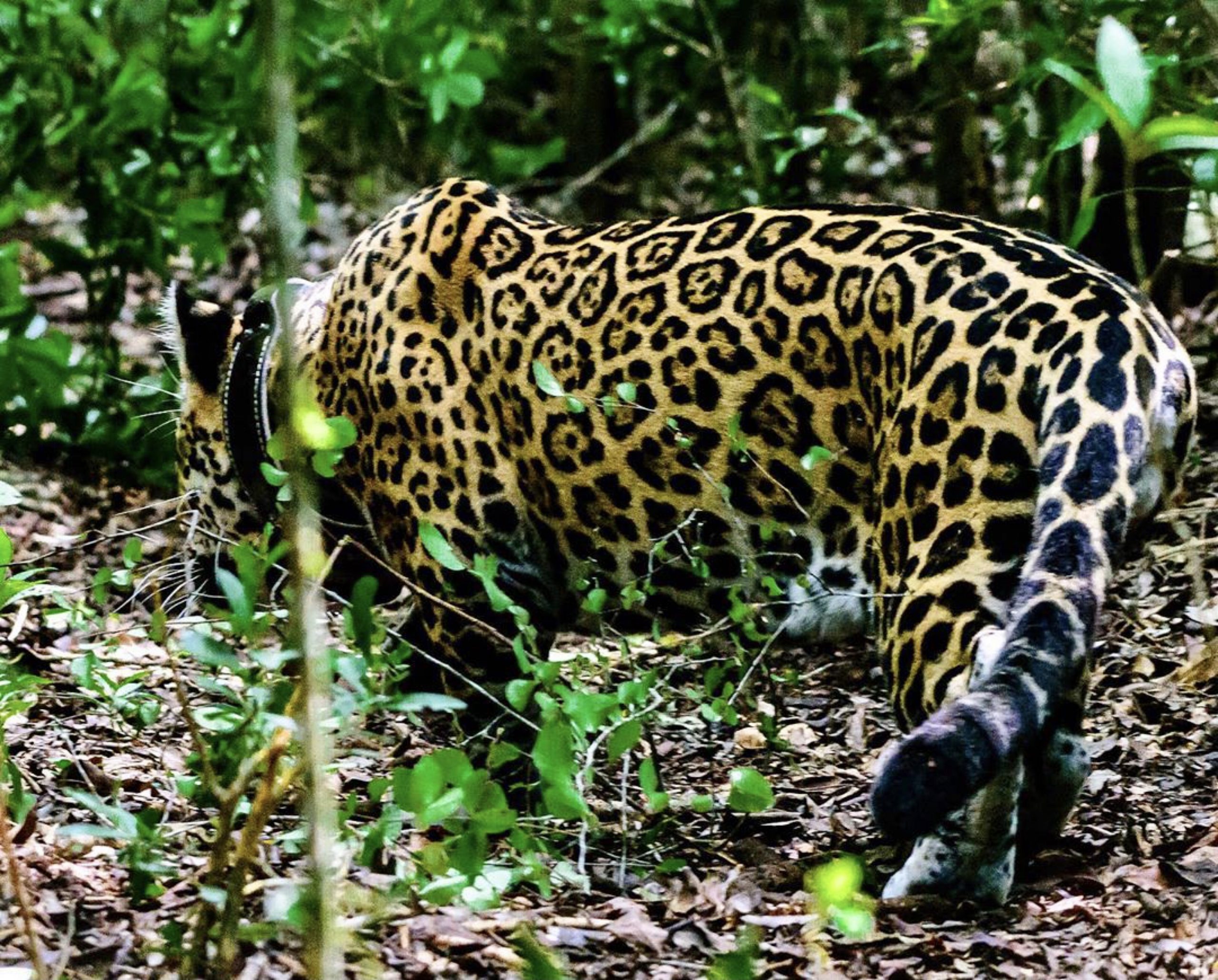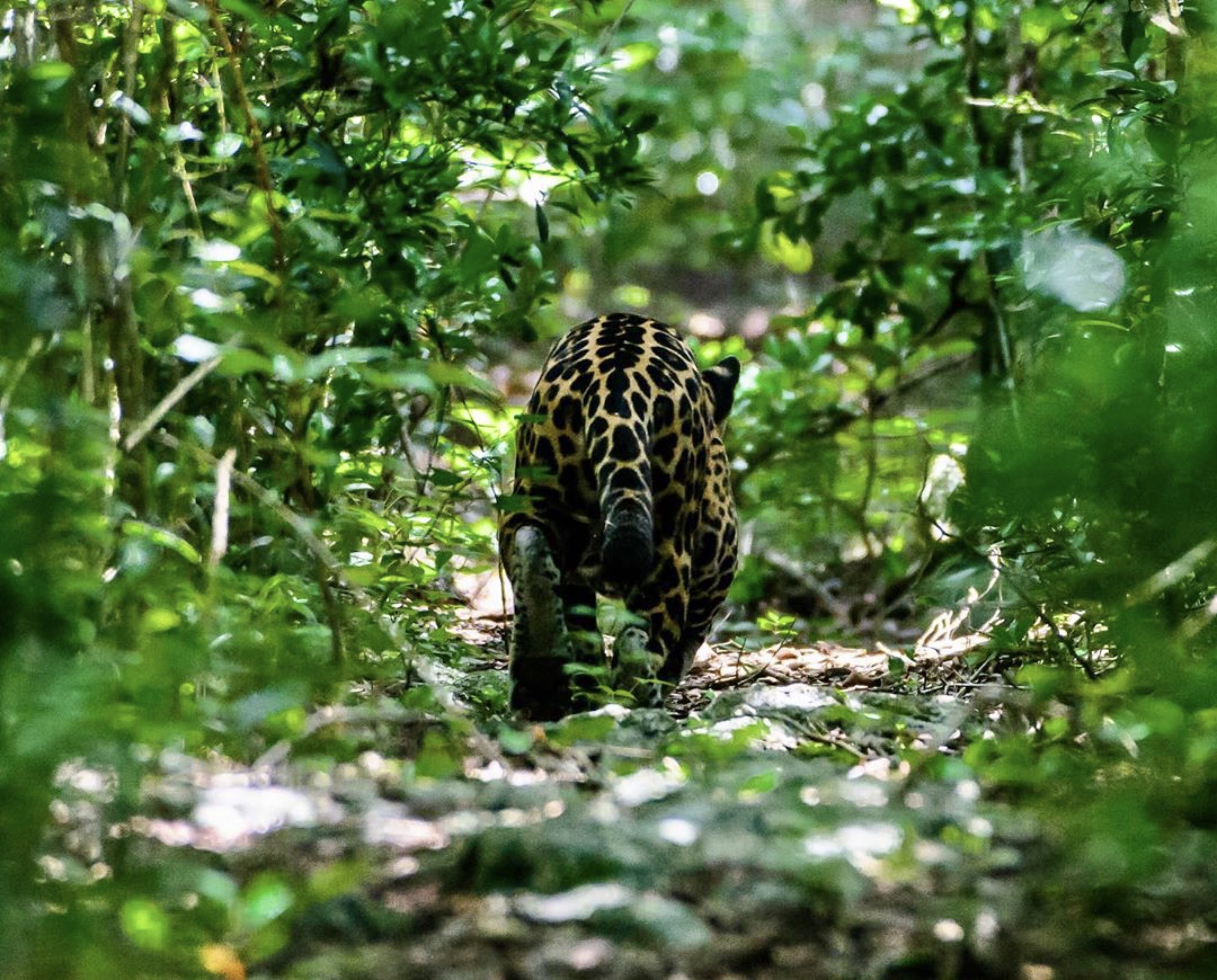IFAW Along With Local Partners Release Rescued Jaguar Back Into The Wild After Being Hit By A Car In Mexico
In a collaboration between government authorities, the scientific sector, local communities, and the International Fund for Animal Welfare (IFAW), a juvenile jaguar has been successfully released back into the wild after being critically injured following a vehicle strike near Chetumal, Mexico, on June 11th.
The injured jaguar was transferred to the Payo Obispo Zoo to begin the rehabilitation process where he was monitored and cared for by an extensive multi-disciplinary team that later named him ‘Covi.’

Upon examination, it was discovered that Covi, estimated to be approximately 18 months old, had sustained a fracture to his left shoulder blade and additional lacerations to his body. Though his prognosis was still good, critical to Covi’s recovery was the team’s ability to monitor and care for him (following the fracture) with minimal human interaction, made possible by a network of cameras and the use of spacious enclosures to promote more natural behavior.
“This was the first case of rescue, rehabilitation, and release of an injured jaguar in the region, a major conservation success on multiple levels,” Joaquin de la Torre Pence, IFAW’s Regional Director for Latin America told WAN. “Achieving rehabilitation with minimal human interaction was a critical way to prepare the jaguar for reintroduction back into the wild. As jaguars are considered an endangered species with populations experiencing significant decline in many of their natural habitats. This rescue and release was indeed a memorable milestone for the conservation of this species.”
An advisory group was set up to monitor the rehabilitation process, including: National Alliance for Jaguar Conservation (ANCJ), the Federal Attorney for Environmental Protection (PROFEPA), the State of Quintana Roo Attorney for Environmental Protection (PPA), the Biodiversity and Natural Protected Areas of the State of Quintana Roo (IBANQROO), and IFAW.
The group determined that the jaguar could indeed be released back into the wild once he began exhibiting signs of a full recovery. In conjunction with the National Commission for Natural Protected Areas (CONANP), it was decided that the Sian Ka’an Biosphere Reserve would provide the most suitable release location given its abundant prey, access to water, low risk of human conflict, and the general support of the local Xhazil Ejido community.

The day of the release
In the dawn hours of September 22nd, the medical team, which included Dr. Erika Flores, IFAW’s Emergency Response and Animal Rescue Coordinator for Latin America, prepared Covi for the 85-mile journey to the Sian Ka’an Reserve. A small team was in place to film the event. Medical tests were conducted and the young male was darted and fitted with a satellite collar that would be used to track future movements after him release. He was then placed inside a wooden crate prepared for transport in IFAW’s Animal Rescue vehicle, escorted by other vehicles representing all authorities involved in the rescue.
Upon reaching the outskirts of the release area, the team transferred the jaguar to an all-terrain truck to continue the nearly 10-mile journey on muddy roads to the entrance of the reserve. Taking turns in groups of six, the team set out on foot to carry the crate another 400 yards deeper into the jungle to the release site, where a pulley and rope release system was set up to ensure a safe release distance. Biologist and team leader Roger Braga, Director of Payo Obispo Zoo, pulled the rope that signaled the animal’s release. Slowly, Covi emerged and calmly began walking towards the jungle and disappeared.
A monumental success for jaguar conservation
“The release of this jaguar was a milestone example of coordinated collaboration between Federal, State, and Municipal authorities, along with a committed local community and NGOs like IFAW,’ said Flores in a statement. “As a team, we all understand the conservation value of this young jaguar, because we know individual animals matter. We are delighted to have played a role in this successful reintroduction back into the wild where he is now able to thrive once again.”

The population of jaguars in Mexico is estimated to be only 4,000 individuals. According to National Alliance for Jaguar Conservation, the population of jaguars in the Yucatán Peninsula is the largest and healthiest given the abundance of prey and other biological conditions. The jaguar faces serious threats resulting from habitat loss and fragmentation, vehicle strikes, conflict due to proximity with humans and domestic animals, as well as the persistent threat of the illegal wildlife trade.
You can help all animals and our planet by choosing compassion on your plate and in your glass. #GoVeg